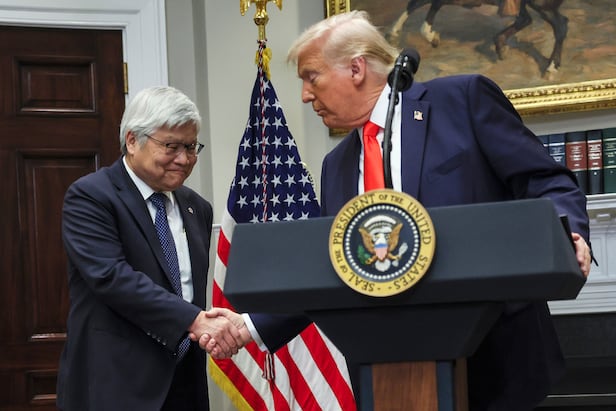The United States is on track to account for more than 20% of the world’s advanced semiconductor production by 2030, driven by a fresh $100 billion investment from Taiwan Semiconductor Manufacturing Co (TSMC), according to industry projections.
Currently, the U.S. holds an 11% share of this market, ranking third globally. With TSMC’s expanded investment, it is expected to surpass South Korea and significantly close the gap with Taiwan, the industry leader.
At the same time, China’s presence in semiconductor manufacturing is expanding. In the mature foundry sector—referring to semiconductor nodes above 14 nanometers—Taiwan led in 2024 with a 43% market share, followed by China at 34%, according to research firm TrendForce. By 2027, however, China is projected to overtake Taiwan, securing 45% of global production while Taiwan’s share falls to 37%.
For decades, semiconductor manufacturing followed a distinct pattern: the U.S. specialized in chip design, South Korea and Taiwan handled production, and China was the largest consumer. Now, both the U.S. and China are emerging as dominant manufacturers, reshaping the global supply chain.

TrendForce projects that the U.S. share of advanced semiconductor manufacturing—defined by cutting-edge processes such as sub-4nm nodes—will grow from 11% in 2021 to 22% by 2030. During the same period, Taiwan’s share is expected to decline from 71% to 58%, while South Korea’s could shrink from 12% to 7%.
TSMC’s expanding U.S. operations are a key driver of this shift. In 2020, the company committed $65 billion to build three factories in Arizona. The first facility recently began mass production of 4nm chips, while the second and third plants were initially planned to start operations in 2027 and 2030. However, with TSMC’s additional $100 billion investment, these timelines are expected to accelerate, with TrendForce predicting volume production between 2026 and 2028.
Earlier last year, the Biden administration reaffirmed its goal of producing at least 20% of the world’s most advanced semiconductors domestically by 2030. While Biden’s CHIPS Act—signed in 2022—allocated $52.7 billion in subsidies for U.S. semiconductor manufacturing, Trump has expressed skepticism about the legislation and has signaled potential policy changes. Despite this uncertainty, TSMC’s latest investment suggests the U.S. remains on track to reach its 20% market share target.
China, meanwhile, is quickly strengthening its position in semiconductor production. By 2026, it is expected to surpass Taiwan as the world’s largest producer of mature foundry semiconductors. While these chips use older technology, they remain essential for industries such as automotive manufacturing and display panels. Mature semiconductors account for roughly 80% of the global chip market.
China is also making strides in advanced semiconductor production. In May, Beijing launched a 65 trillion won ($48 billion) investment fund focused on developing high-bandwidth memory (HBM) and other cutting-edge chip technologies. Chinese memory chipmaker ChangXin Memory Technologies (CXMT) has begun mass production of DDR5 memory using a 16nm process—one of the most advanced nodes in the memory sector.
Beyond manufacturing, China has emerged as a leader in semiconductor research and development. A study by Georgetown University’s Emerging Technology Observatory found that China published 160,852 semiconductor-related research papers between 2018 and 2023, more than twice as many as the U.S. (71,688). China also dominates high-impact research, with nearly 23,520 of its papers ranking in the top 10% of most-cited studies, far ahead of the U.S. (10,300), South Korea (3,920), and Germany (2,716).
While China still trails in cutting-edge semiconductor fabrication and faces restrictions on acquiring advanced chipmaking equipment, it is laying the foundation to lead in next-generation semiconductor technologies, according to the South China Morning Post.


